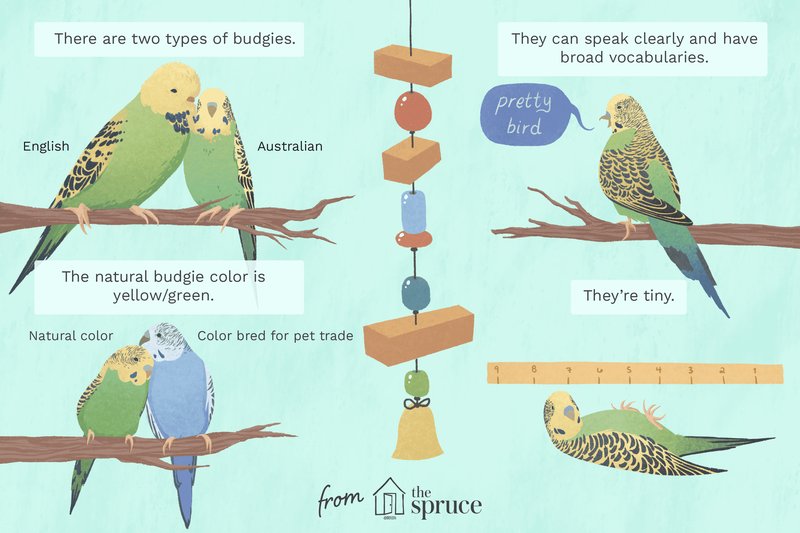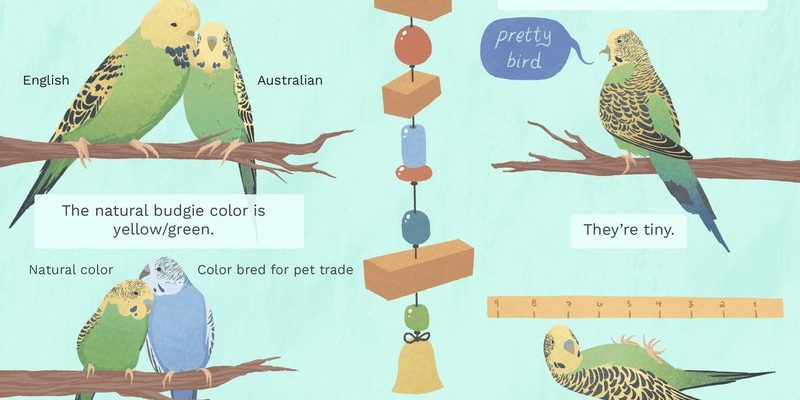
Let’s break it down. From parakeets to canaries, a variety of birds share characteristics with budgies. Each bird has its unique quirks and charms, making the bird-choosing process a bit overwhelming. But don’t worry—this guide is here to help! We’ll explore the key differences and similarities between budgies and other common bird species so you can make an informed decision.
What Is a Budgie, Anyway?
Budgies, or budgerigars, are small, social parrots native to Australia. These feathered friends are often loved for their vibrant colors and playful personalities. Most budgies come in shades of green, yellow, and blue, making them a delightful addition to any home. If you’ve ever watched a budgie flit about their cage, you know they’re full of energy and curiosity.
Here’s the thing: budgies are highly social creatures. In the wild, they live in flocks, and their social nature means they often thrive in pairs or small groups. If you’re considering bringing one home, think about whether you can provide that social stimulation. Loneliness can lead to boredom and stress for these lively little guys.
Budgies are also quite intelligent. They can learn to mimic sounds and even speak a few words with proper training. While every bird has its personality, many budgie owners are amazed at how engaging and interactive their pets can be.
Comparing Budgies to Parakeets
You might have noticed that the term “parakeet” is often used interchangeably with “budgie.” However, it’s essential to know that not all parakeets are budgies, but all budgies are parakeets. Confused yet? Let me explain.
The term “parakeet” refers to a broad category of small to medium-sized parrots with long tail feathers. This group includes several species, such as the Indian Ringneck and the Monk Parakeet. Budgies fall under this umbrella, but they have their unique characteristics.
A significant difference between budgies and other parakeets lies in their size and temperament. Budgies are generally smaller, averaging about 7 inches long, while other parakeets can be larger and vary in personality. For example, *Indian Ringnecks* are known for their strong independent streak, while budgies are often more playful and sociable.
Care Requirements
When it comes to care requirements, budgies are relatively easy to manage compared to some other parakeets. They don’t need as much space as larger species, making them perfect for smaller living situations. Here’s a quick comparison:
- Budgies: Thrive in smaller cages and require social interaction.
- Indian Ringnecks: Require larger cages and more stimulation due to their independent nature.
If you’re looking for a bird that’s easy to bond with and entertaining, budgies might be your best bet!
Canaries vs. Budgies: A Colorful Comparison
When considering pet birds, canaries often make the list alongside budgies. Both birds are known for their beautiful colors and delightful songs, but they do have some key differences.
Canaries tend to be more solitary than budgies. While budgies love company and often do better in pairs, canaries prefer to be alone. This means if you’re thinking about getting a canary, you might want to focus on providing ample mental stimulation and a well-designed habitat.
In terms of personality, canaries are generally less interactive. They’re great for watching and enjoying their singing, but they might not engage with you like a budgie would. So, if you’re looking for a more hands-on experience, a budgie may be the better choice for you.
Care and Maintenance
Both budgies and canaries have specific care needs, but they do differ slightly:
- Budgies: Require regular out-of-cage time for exercise, social interaction, and play.
- Canaries: Prefer a calm environment with minimal disturbances; out-of-cage time is optional but beneficial.
Ultimately, both birds can be lovely companions, but keep their individual needs in mind as you make your choice!
Lovebirds vs. Budgies: The Romantic Pairing?
Lovebirds are another popular species that might catch your eye if you’re considering a budgie. These small parrots are known for forming strong emotional bonds, often displaying affectionate behaviors toward their partners.
The key difference here is the temperament. Lovebirds tend to be more intense in their relationships, requiring careful handling and socialization. They can be more assertive than budgies, especially when they feel their territory is being threatened. If you prefer a bird that is a little more laid-back and playful, a budgie may be your ideal companion.
Socialization Needs
Socialization is crucial for these birds. Here’s a look at the differences:
- Budgies: Love social interactions and often do best in pairs for constant companionship.
- Lovebirds: May require more one-on-one time and can sometimes be territorial, especially if they bond strongly with another bird.
Think about how much time you can devote to socializing if you’re considering a lovebird. They can be rewarding companions but may need a little extra effort compared to a budgie.
Identifying Gender Differences in Budgies vs. Other Species
A fun fact about budgies is that they have an easy way to identify their gender through their cere (the area above their beak). Male budgies typically have a bright blue cere, while females often have a light brown or beige cere, especially when they are in breeding condition.
In contrast, many similar species, like canaries and lovebirds, don’t have such noticeable differences in appearance based on gender. This could be a deciding factor for you if you wish to have a specific gender for breeding or companionship.
What About Other Parrots?
Other parrot species, such as cockatiels and cockatoos, have even more distinct gender differences, often requiring genetic testing for accurate identification.
This simplicity in gender identification makes budgies appealing and easy to manage for first-time bird owners.
Wrapping Up Your Bird Journey
So, after diving into the differences between budgies and similar bird species, what’s the takeaway? Budgies are charming, sociable, and relatively low-maintenance birds that make fantastic companions, especially for those new to bird care.
While canaries, lovebirds, and other parakeets each bring unique traits and challenges to the table, it often comes down to your personal preferences and lifestyle. If you want a lively, interactive pet, budgies are a top choice.
Ultimately, whether you choose a budgie, canary, or lovebird, you’re opening your heart and home to a wonderful creature that can bring joy and companionship into your life. So take your time, do your research, and enjoy the colorful world of pet birds!

